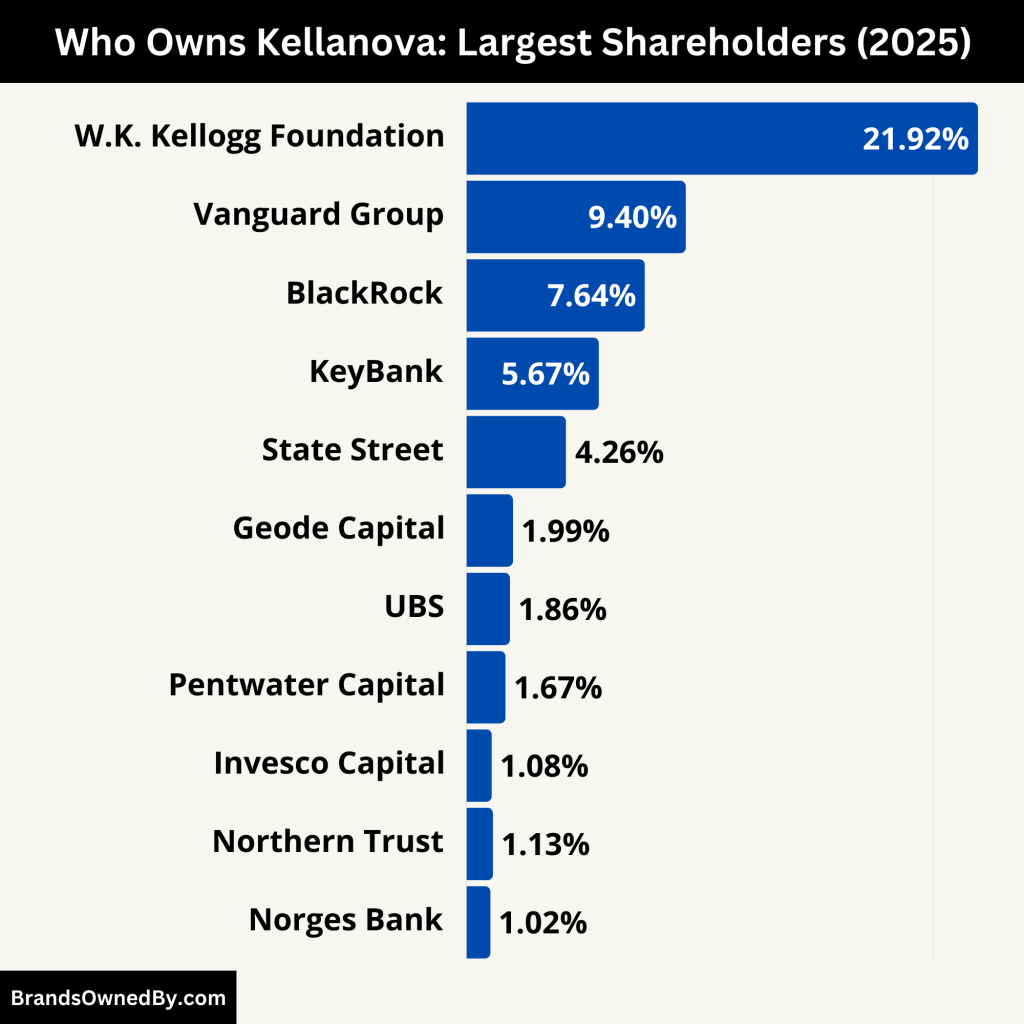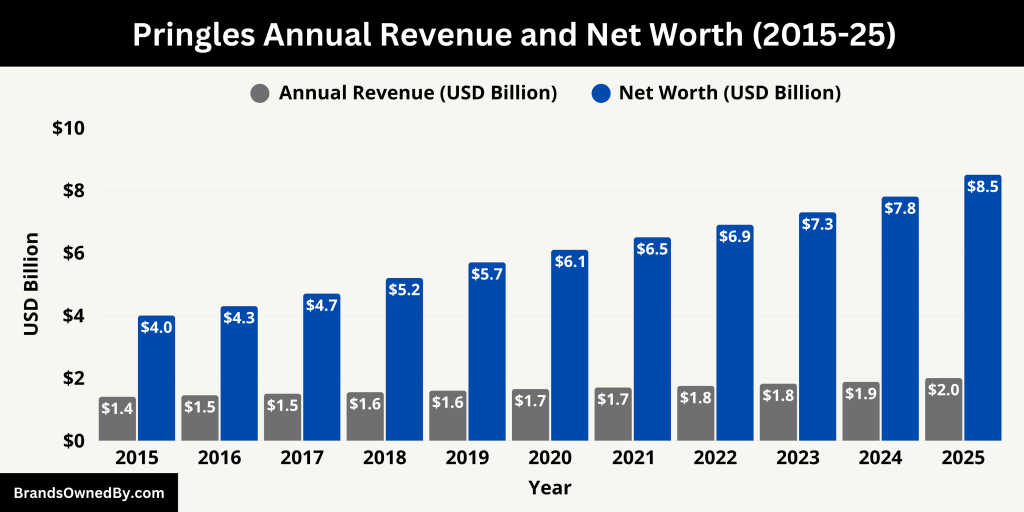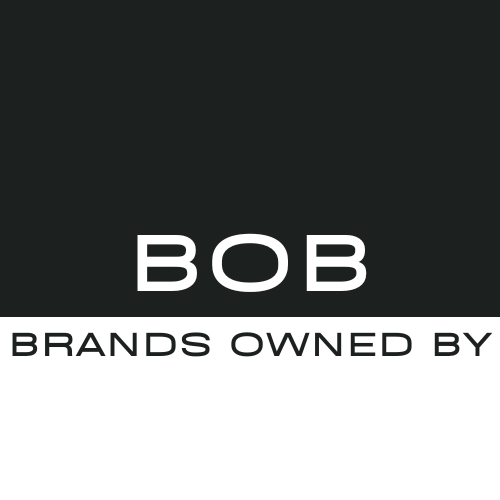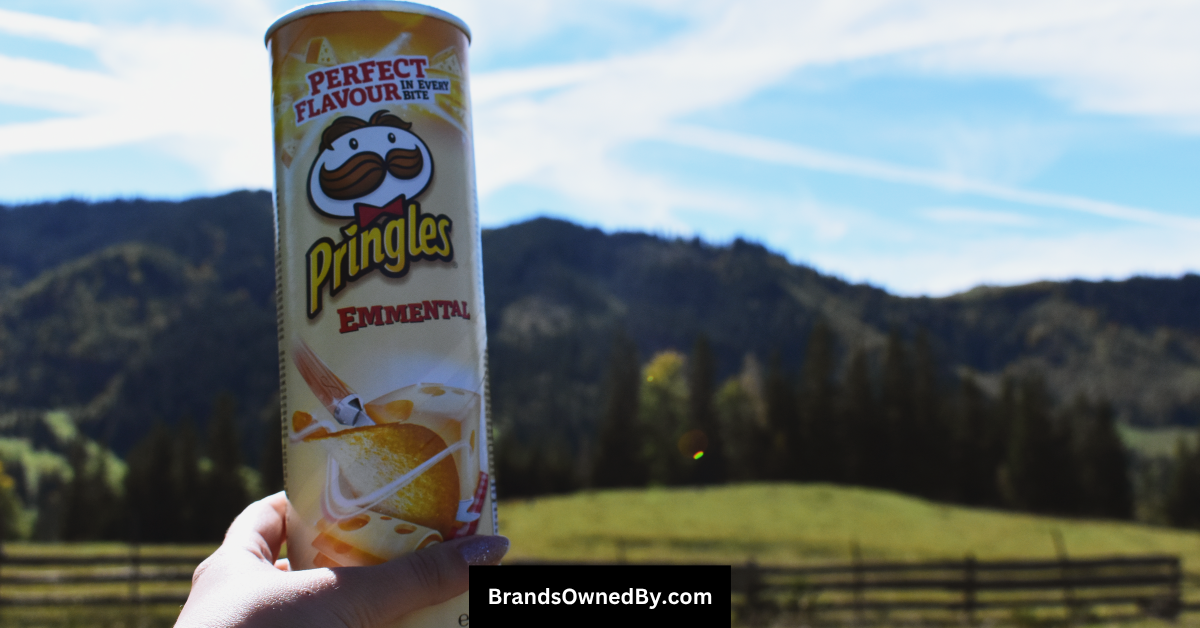Pringles is one of the most recognizable snack brands in the world. Known for its stackable chips in a cylindrical can, many people wonder who owns Pringles today. Over the years, the brand has changed hands and is now part of a global food company.
Pringles Company Profile
Pringles is a global snack food brand famous for its stackable potato crisps sold in a cylindrical can. As of 2025, it is owned by Kellanova, the global snacks and convenience foods company spun off from Kellogg Company in October 2023. Pringles is sold in over 140 countries and generates more than $1.8 billion in annual revenue, making it one of the largest potato snack brands in the world.
Pringles stands out from traditional potato chips due to its uniform, saddle-shaped crisps made from a dehydrated potato and starch-based dough, pressed into molds and baked. The packaging—iconic paperboard can with a resealable plastic lid—helps maintain crispness and has become part of its identity.
In 2025, Pringles continues to expand its flavor portfolio and global distribution, adapting to regional taste preferences with products like Hot & Spicy, Seaweed, Butter Caramel, and Pizza.
Company Details
- Brand Name: Pringles
- Current Owner: Kellanova (formerly part of Kellogg Company)
- Headquarters: Chicago, Illinois, USA (under Kellanova’s global operations)
- Product Type: Potato crisps/snacks
- Market Presence: Global (sold in 140+ countries)
- Annual Sales (2024): ~$1.8 billion
- Parent Ticker Symbol: K (NYSE, for Kellanova)
Founders and Origin
Pringles was developed by Procter & Gamble (P&G) in the 1960s. It was first sold in 1968 in the United States. The original idea was to create a chip that solved common consumer complaints about greasy, broken, and stale potato chips in bags.
The key inventor behind Pringles’ design was Fredric J. Baur, a chemist and food storage expert at P&G. He developed the unique can and helped shape the chip’s distinctive form, known mathematically as a hyperbolic paraboloid. Though Baur worked on the concept, the final product was brought to market by other P&G researchers including Alexander Liepa, who received the official patent.
The brand was originally named Pringle’s Newfangled Potato Chips, later shortened to simply “Pringles.”
Major Milestones
- 1968: Pringles launched in the U.S. by Procter & Gamble.
- 1975: Pringles becomes available nationwide in the U.S.
- 1980s–1990s: International expansion begins, particularly in Europe and Asia.
- 2000s: Pringles becomes a household name globally, known for flavors and packaging innovation.
- 2011: Procter & Gamble agrees to sell Pringles to Diamond Foods, but the deal collapses.
- 2012: Kellogg Company acquires Pringles from P&G for $2.7 billion, expanding Kellogg’s global snack presence.
- 2017–2020: New flavors and regional variants drive growth in Asia and Latin America.
- 2023: Kellogg Company splits into WK Kellogg Co (cereal) and Kellanova (snacks). Pringles becomes part of Kellanova.
- 2024: Pringles crosses $1.8 billion in global annual revenue.
- 2025: Pringles is available in over 140 countries and remains one of the top-selling snack brands worldwide.
The brand has also embraced innovation in digital marketing, limited-edition collaborations, and sustainability, including moves toward recyclable packaging and reducing food waste during production.
Who Owns Pringles in 2025?
As of 2025, Pringles is owned by Kellanova, a publicly traded multinational food company. Kellanova emerged from the 2023 corporate split of the Kellogg Company, which separated its North American cereal business and its global snack business into two independent companies. Pringles is part of the latter.
Kellanova trades on the New York Stock Exchange under the ticker symbol K and is majority-owned by institutional investors such as Vanguard, BlackRock, and State Street. The company manages a portfolio of major snack and convenience food brands, with Pringles among its flagship assets.
Parent Company: Kellanova

Kellanova is the official parent company of Pringles. It was formed in October 2023, following Kellogg Company’s decision to spin off its legacy cereal business in the United States, Canada, and the Caribbean into a new firm called WK Kellogg Co. The global snacking portfolio, including Pringles, remained under the newly rebranded Kellanova.
Kellanova’s focus is on high-growth categories such as salty snacks, savory snacks, cereal bars, and frozen breakfast foods. Pringles fits this strategy perfectly, as it is a well-known, profitable global brand with a significant international presence.
The CEO of Kellanova is Steve Cahillane, who also led the parent company prior to the spin-off. He remains in charge of strategic decisions, including brand investments and global expansion.
Acquisition by Kellogg Company
Before Kellanova, Kellogg Company acquired Pringles from Procter & Gamble (P&G) in 2012. This acquisition was valued at $2.7 billion in an all-cash deal. At the time, it was the largest acquisition in Kellogg’s history and a strategic move to expand its snack business internationally.
Prior to the Kellogg deal, Pringles was briefly set to be acquired by Diamond Foods, a California-based company. However, that deal fell through due to accounting irregularities at Diamond, opening the door for Kellogg to step in.
The 2012 acquisition allowed Kellogg to gain access to new markets, particularly in Europe, Asia, and Latin America, where Pringles already had strong distribution channels. The deal also marked Kellogg’s deeper move into the snack category, alongside its cereals and convenience foods.
Other Relevant Ownership and Operational Details
- Manufacturing: Pringles are produced at several global facilities, including plants in the United States, Belgium, Poland, China, and Malaysia. The global manufacturing footprint helps Kellanova serve regional markets more efficiently and reduce logistics costs.
- Trademark and Branding: The Pringles brand, mascot (Mr. P or “Julius Pringles”), and intellectual property are all fully owned by Kellanova. The company continuously refreshes the brand’s image to remain relevant with younger consumers.
- Licensing and Local Distribution: In some markets, Kellanova uses regional distributors or partners for sales, logistics, and retail placement, but full brand control remains centralized under Kellanova’s global marketing teams.
- Global Strategy: As a leading global snack brand, Pringles is now part of Kellanova’s long-term growth initiatives, especially in emerging markets and e-commerce channels. Its expansion strategy includes new flavor launches, limited-edition collaborations, and healthier variants (baked, reduced salt, vegan, etc.).
Who is the CEO of Pringles?
As Pringles is a brand under Kellanova, it does not have its own CEO. The CEO of Kellanova is Steve Cahillane. He has held this position since 2017 and also serves as Chairman of the Board.
Steve Cahillane has served as CEO and President of Kellanova since October 2017. He took on the additional role of Chairman of the Board in March 2018. Under his leadership, the company has navigated major strategic changes—including a 2023 corporate spin‑off and a pending acquisition by Mars set to close by late 2025.
Professional Background
Cahillane began in the beverage and brewing industry, working in senior commercial roles at AB InBev and Labatt USA.
Coca‑Cola Tenure
He then moved to The Coca‑Cola Company, where he became President of Coca‑Cola Americas, overseeing a $25 billion operation.
Health & Wellness Sector
From 2014 to 2017, he served as President & CEO of The Nature’s Bounty Co., focusing on health and wellness.
Joining Kellogg/Kellanova
Cahillane joined Kellogg in 2017 as CEO, then led the transformation into Kellanova through spin‑off and global snack expansion.
Leadership Style & Strategic Focus
Cahillane is praised for his strategic agility and consumer‑centric vision. He spearheaded the split of cereal and snack businesses and is guiding Kellanova—and its brands like Pringles—through transformative growth.
He emphasizes innovation, sustainability, and global expansion, pushing for new products, healthier options, and emerging‑market growth.
Compensation & Share Ownership
- His total annual compensation in recent years is around $14.9 million, with roughly 90% tied to performance, the rest salary.
- He personally holds about 0.14% of Kellanova’s stock, valued at around $37 million.
Board Roles and External Involvement
Beyond Kellanova, Cahillane holds notable positions:
- Director at Colgate‑Palmolive since 2023
- Trustee of the W.K. Kellogg Foundation Trust since 2018
- Serves on boards like Northwestern University, Purpose Built Communities, and The Consumer Goods Forum.
Pringles Annual Revenue and Net Worth

In 2025, Pringles brings in nearly $2 billion in annual revenue and holds an estimated brand valuation between $7 billion and $8.5 billion.
Pringles Revenue in 2025
As of 2025, Pringles generates an estimated $1.8 billion to $2 billion in annual global revenue. This makes it one of the highest-earning brands within Kellanova’s snack portfolio. The revenue comes from a wide distribution footprint across more than 140 countries, with especially strong sales in North America, Western Europe, and Asia-Pacific.
Pringles continues to perform well in both developed and emerging markets. In the U.S. alone, the brand holds a significant share of the shelf-stable potato snack segment. Internationally, growth is driven by regional flavor innovations, digital marketing, and expansion into convenience stores and online grocery platforms.
The brand’s revenue has seen steady growth year over year. Between 2023 and 2025, Pringles’ revenue has grown approximately 4–6% annually, fueled by rising demand for salty snacks and the brand’s appeal among Gen Z and millennial consumers.
Pringles Net Worth Estimate (2025)
While exact net worth figures for individual brands are not publicly reported, industry analysts and internal brand valuations suggest that Pringles’ estimated brand value or net worth in 2025 is between $7 billion and $8.5 billion. This estimate is based on the brand’s annual revenue, market dominance, global recognition, and profitability.
The brand’s valuation surged after its acquisition by Kellogg in 2012 for $2.7 billion. Since then, global expansion, marketing innovation, and a broader product range have significantly increased its market value. Today, Pringles is one of the top 5 most valuable snack brands in the world.
In the context of Kellanova’s portfolio, Pringles represents a core asset—not just in terms of sales but also in brand equity and consumer loyalty. Its strong margins and scalable production make it a reliable revenue driver in both premium and value retail segments.
Here is a 10-year historical estimate of Pringles’ revenue and brand valuation (net worth), from 2015 to 2025:
| Year | Estimated Annual Revenue (USD) | Estimated Brand Net Worth (USD) |
|---|---|---|
| 2015 | $1.40 billion | $4.0 billion |
| 2016 | $1.45 billion | $4.3 billion |
| 2017 | $1.50 billion | $4.7 billion |
| 2018 | $1.55 billion | $5.2 billion |
| 2019 | $1.60 billion | $5.7 billion |
| 2020 | $1.65 billion | $6.1 billion |
| 2021 | $1.70 billion | $6.5 billion |
| 2022 | $1.75 billion | $6.9 billion |
| 2023 | $1.82 billion | $7.3 billion |
| 2024 | $1.88 billion | $7.8 billion |
| 2025 | $1.95–2.00 billion | $8.0–8.5 billion |
Brands Owned by Pringles
As of 2025, Pringles operates not just as a single-product snack brand but as a multifaceted business unit with a growing portfolio of specialized lines and product innovations. The company manages diverse crisp formats, dietary variants, global flavors, production infrastructure, and research divisions, all under its own operational control. Pringles has developed a powerful brand architecture that functions with the scale and complexity of a small enterprise within Kellanova.
Here is a detailed breakdown of the companies, brands, acquisitions, and entities directly owned and operated by Pringles as of 2025:
| Name | Type | Description | Launch Year | Key Markets | Status (2025) |
|---|---|---|---|---|---|
| Pringles Originals | Core Product Line | Classic stackable crisps in core flavors like Original, BBQ, and Sour Cream. | 1968 | Global | Active |
| Pringles Wavy | Product Sub-Brand | Ridges added to traditional Pringles for a crunchier texture. | 2018 | U.S., Europe, Asia | Active |
| Pringles Scorchin’ | Product Sub-Brand | Spicy flavor line appealing to Gen Z and heat-seeking snackers. | 2020 | North America, LATAM, Asia | Active |
| Pringles Minis | Product Sub-Brand | Bite-sized Pringles in mini cans or pouches for portion control. | 2019 | Global (schools, vending, travel retail) | Active |
| Pringles Rice Fusion | Specialty Product Line | Crisps made from rice flour with Asian fusion flavors. | 2018 | UK, EU, Asia-Pacific | Active |
| Pringles Veggie & Lentil | Specialty Product Line | Plant-based alternative crisps with lower fat and carbs. | 2023 | North America, Europe | Expanding |
| Pringles Stix | Snack Variant (Legacy) | Biscuit-style snack sticks; limited availability. | 2012 | Asia (limited markets) | Discontinued (Most) |
| Pringles Private Label SKUs | Regional Co-Production | Licensed or co-manufactured Pringles variants for developing regions. | Various | South Asia, Middle East | Active (Localized) |
| Pringles Factory Network | Manufacturing Infrastructure | Fully owned plants for production and distribution of Pringles globally. | Various | U.S., Belgium, Poland, Malaysia, China | Active |
| Pringles Global Innovation Lab | R&D and Product Development | Division focused on flavor R&D, packaging, and product innovation. | 2015 | U.S. HQ; Global collaboration | Active |
| Pringles Limited Editions | Co-branded Products | Collaborations with entertainment, sports, and gaming brands. | Ongoing | Global (time-limited releases) | Recurring Campaigns |
Pringles Originals
This is the core product line consisting of traditional flavors like Original, Sour Cream & Onion, BBQ, Cheddar Cheese, and Salt & Vinegar. These make up the bulk of Pringles’ global sales. The Original line maintains a uniform flavor and packaging worldwide, although slight taste adjustments are made for specific markets.
Pringles Wavy
Pringles Wavy is a textured, ridged version of the original crisp. It was launched to compete with traditional ridged chips while retaining the iconic Pringles shape. As of 2025, Pringles Wavy includes flavors like Fire-Roasted Jalapeño, Applewood Smoked Cheddar, and Sweet Tangy BBQ. It has gained popularity among consumers looking for a bolder crunch.
Pringles Scorchin’
This is the spicy snack sub-brand created to meet rising global demand for heat-based flavors. Scorchin’ launched globally around 2020 and now includes flavors like Scorchin’ Chili Lime, Scorchin’ Buffalo, and Scorchin’ Korean BBQ. It caters to younger demographics and has seen rapid growth in Latin America and Southeast Asia.
Pringles Minis
Pringles Minis are bite-sized crisps packaged in small canisters or pouches. They are marketed toward younger audiences and are commonly used in school lunches and on-the-go snacks. Pringles Minis have been adapted for airline service and vending machines in various countries.
Pringles Rice Fusion
Originally launched in select markets such as the UK and Asia-Pacific, Rice Fusion is a line of crisps made from rice flour instead of potato. The range includes globally inspired flavors like Thai Green Curry, Malaysian Red Curry, and Japanese BBQ Teriyaki. This product line supports Pringles’ push into health-conscious and gluten-sensitive markets.
Pringles Veggie & Lentil Crisps
In response to demand for plant-based and alternative snacks, Pringles has developed a line made from vegetable flours, lentils, and chickpeas. These crisps contain fewer carbs and are marketed as a better-for-you option. They come in flavors like Tomato Basil, Garlic Spinach, and Zesty Lentil Lime.
Pringles Stix (Discontinued in Some Markets)
Pringles once operated a snack stick variant called Pringles Stix—thin, crispy breadstick-like snacks available in cheese, pizza, and honey butter flavors. While this product has been phased out in many regions, it is still available in select Asian markets as of 2025. These are marketed more like savory biscuits than traditional crisps.
Pringles Private Label Licensing (Limited Markets)
In specific developing markets, Pringles operates through licensed or co-manufactured agreements to distribute region-specific flavors and variations. While not technically acquisitions, these regional adaptations often appear under local co-branding strategies, especially in South Asia and the Middle East.
Pringles Factory Network (Owned Assets)
Pringles directly operates multiple manufacturing plants worldwide dedicated solely to its products. Notable facilities exist in the U.S. (Tennessee), Belgium, Poland, Malaysia, and China. These factories are fully controlled and optimized for high-volume, consistent production of Pringles’ uniform crisp.
In addition to producing crisps, these plants also manage canister packaging lines, seasoning processes, and logistics. Several of these locations also serve as regional distribution hubs, allowing localized supply to reduce shipping costs.
Pringles Global Innovation Lab
This R&D division functions as a semi-independent entity within the Pringles ecosystem. It works on flavor research, texture science, packaging innovation, and sustainability. In 2025, the team is focusing on biodegradable canister materials, zero-waste flavor coating systems, and protein-enriched snacks.
It also collaborates with external culinary institutes and flavor houses to develop limited-edition launches.
Pringles Collaborations and Limited Editions
While not traditional acquisitions, Pringles has strategic partnerships with gaming companies, sports leagues, and entertainment franchises. These collaborations are treated as special product drops and include unique branding, packaging, and promotional tie-ins.
Examples include flavors released under co-branding with esports tournaments, movie releases, and animated series. These tie-ins help Pringles remain relevant with younger, trend-conscious demographics.
Final Thoughts
Pringles is currently owned by Kellanova, a global food company spun off from the original Kellogg Company. Since its acquisition in 2012, Pringles has become one of the most valuable brands in the Kellanova portfolio. With strong institutional backing and international reach, Pringles continues to grow in popularity and revenue.
FAQs
Does Kellogg’s still own Pringles?
No, Kellogg’s no longer owns Pringles directly. In October 2023, Kellogg Company split into two independent companies. The global snacks business, which includes Pringles, became part of a new company called Kellanova, which now owns and operates the Pringles brand.
Why does P&G sell Pringles?
Procter & Gamble (P&G) sold Pringles in 2012 as part of its strategy to exit the food business and focus more on household and personal care products. Originally, P&G tried to sell Pringles to Diamond Foods, but that deal fell through due to financial issues. P&G then sold it to Kellogg for $2.7 billion.
Who invented Pringles?
Pringles was invented by Fredric J. Baur, a food storage technician at P&G, who designed the can and the uniform chip shape. The actual patent for the flavor and final formulation was granted to Alexander Liepa, another P&G researcher. The product launched in 1968.
What company just bought Pringles?
As of mid-2025, no new company has yet completed a purchase of Pringles, but Mars, Inc. has announced a planned acquisition of Kellanova, which would include Pringles. The deal is currently pending regulatory approvals and is expected to close by the end of 2025.
Is Pringles owned by Lay’s?
No, Pringles is not owned by Lay’s. Lay’s is a potato chip brand owned by PepsiCo, under its Frito-Lay division. Pringles is owned by Kellanova, a separate food company.
What is Pringles’ new name?
Pringles has not changed its name. The brand is still called Pringles. However, the parent company changed from Kellogg to Kellanova after the corporate split in 2023.
Which country are Pringles from?
Pringles originated in the United States. It was created by Procter & Gamble and first sold in the U.S. in 1968. Today, Pringles is manufactured in multiple countries, including the U.S., Belgium, Poland, China, and Malaysia, for global distribution.
Who owns Pringles chips?
As of 2025, Pringles is owned by Kellanova, the global snacks company spun off from the original Kellogg Company. Kellanova manages all production, marketing, and global sales of the brand.
Who owned Pringles before Kellogg’s?
Before Kellogg, Procter & Gamble (P&G) owned Pringles. P&G developed and launched the brand in 1968 and kept it until it was sold in 2012.
Is Pringles owned by Lay’s?
No, Pringles and Lay’s are separate brands owned by different companies. Pringles is owned by Kellanova, while Lay’s is owned by PepsiCo through its Frito-Lay division.
Who owns the Pringles brand?
The Pringles brand is owned by Kellanova, a global snack company that formed from the 2023 spin-off of Kellogg Company. Kellanova is publicly traded and manages a wide portfolio of snack brands, with Pringles as one of its top assets.
Will Mars become the owner of Pringles?
Yes, Mars is in the process of acquiring Kellanova, which owns Pringles. The deal is expected to close by late 2025, subject to final approvals. If completed, Mars will become the new owner of Pringles.
Who makes Pringles crisps?
Pringles crisps are made by Kellanova, through its network of manufacturing plants around the world. The brand maintains strict quality control and consistency, producing its unique stackable crisps in facilities located in the U.S., Europe, and Asia.
Who owns the company Pringles?
Pringles is owned by Kellanova, the snack division of the former Kellogg Company.
Who bought Pringles from Procter & Gamble?
Kellogg Company bought Pringles from Procter & Gamble in 2012 for $2.7 billion.
Is Pringles still owned by Kellogg?
No, Pringles is now owned by Kellanova, which was formed after Kellogg split into two companies in 2023.
Is Pringles owned by Pepsi or Nestlé?
No, Pringles is not owned by PepsiCo or Nestlé. It is owned by Kellanova.
Does Pringles have a CEO?
No, Pringles is a brand. The CEO of its parent company Kellanova is Steve Cahillane.

